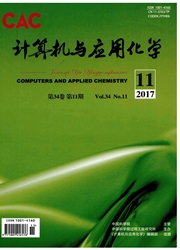

 中文摘要:
中文摘要:
为了准确分析气液两相流流型的复杂性及其动力学行为,通过计算多尺度谱熵,从频域的角度分析气液两相流在各个尺度下的复杂性及动力学特性。首先分析了几种典型信号的多尺度谱熵特征,并验证了多尺度谱熵算法的可行性以及对噪声的鲁棒性,在此基础上计算了气液两相流泡状流、塞状流及弹状流3种典型流型的多尺度谱熵值,分析了流型频域复杂性演变规律以及相应尺度下的动力学特性。实验结果表明:具有随机性的泡状流的多尺度谱熵最高;而塞状流由于气塞与液塞的交替运动导致多尺度谱熵最低,弹状流的多尺度谱熵居于泡状流和塞状流之间。在第l至第4尺度,3种流型的谱熵变化迅速,且塞状流的谱熵值与弹状流接近,反映出3种流型的微观动力学特性;而在第4尺度后3种流型的谱熵值波动较小,反映出各个流型的宏观特性。因此,多尺度谱熵可定量刻画气液两相流型的频域复杂性,谱熵的变化可以很好的指示流型动力学行为的演变,有助于进一步理解流型演化机理;此外,多尺度谱熵相较传统的时域熵分析方法,计算速度快,计算复杂度低,为两相流流型在线识别及信息的即时处理提供一种新途径。
 英文摘要:
英文摘要:
To accurately analyze the complexity and dynamical behaviors of gas/liquid two-phase flow regimes, the gas-liquid two-phase flow experiments for measuring the time series of flow signals were systematically carried out in a 50 mm inner-diameter horizontal pipe, which were studied by multiscale spectral entropy combined with multiscale analysis method and Fourier transform in frequency domain. Firstly, examples using time series from classical systems were provided to demonstrate the effectiveness and robust of our approach. Based on the above studies, the spectral entropies of three flow regimes (bubble flow, plug flow and slug flow) were calculated with conductance fluctuating signals from the first scale to the fiftieth scale. The experimental results indicated that the fluctuation of spectral entropy of each scale reflected the dynamic characteristics and complexity of each flow regime from a frequency domain perspective. Bubble flow with stochastic characteristic was shown higher; Plug flow was represented lower because of the intermittence of gas and liquid slug; the unstable characteristics of slug flow behaved as the spectral entropy between bubble flow and plug flow, and the spectral entropy closed to that of plug flow at the 1-4 scales. Furthermore, the spectral entropy of three flow regimes changed fast at 1-4 scales and then varied slightly at subsequent scales, which indicated that the frequency components of three flow regimes at small scales were more complex compared with those at larger scales. These interesting and significant findings suggest that multiscale spectral entropy can be used as quantitative parameters for measuring frequency domain complexity of gas/liquid two-phase flow regimes. In addition, multiscale spectral entropy, which has merits of less computation time and low arithmetic complexity, is helpful in engineering application and understanding the dynamic characteristics of flow regime transition.
 同期刊论文项目
同期刊论文项目
 同项目期刊论文
同项目期刊论文
 3D reconstruction of single rising bubble in water using digital image processing and characteristic
3D reconstruction of single rising bubble in water using digital image processing and characteristic Investigation of upward cocurrent gas-liquid pipe flow using ultrafast X-ray tomography and wire-mes
Investigation of upward cocurrent gas-liquid pipe flow using ultrafast X-ray tomography and wire-mes 期刊信息
期刊信息
